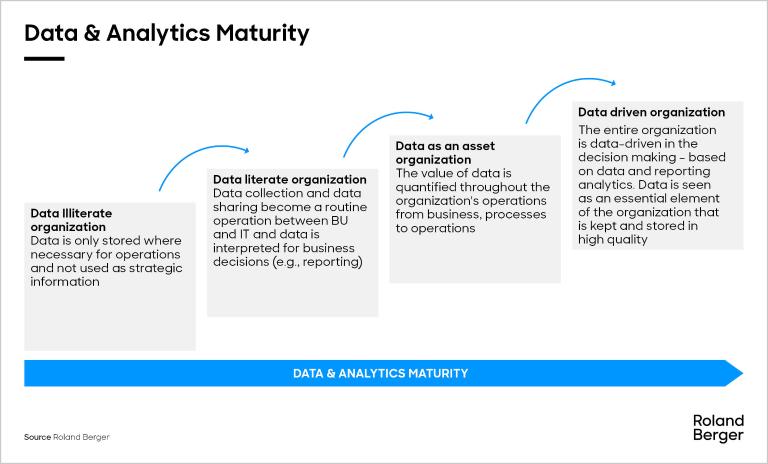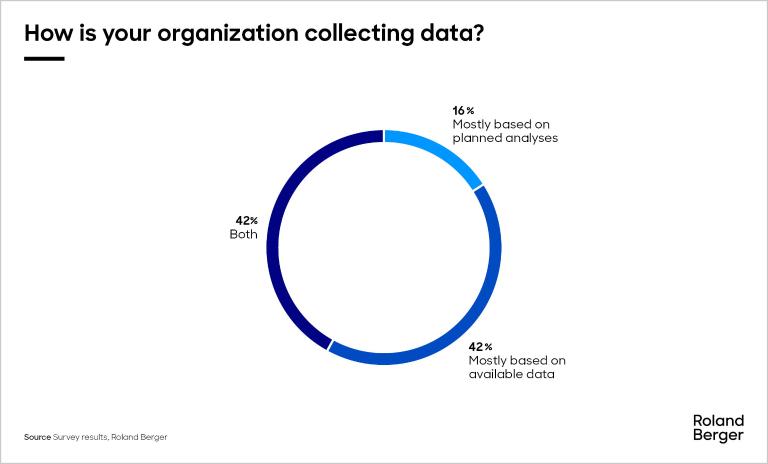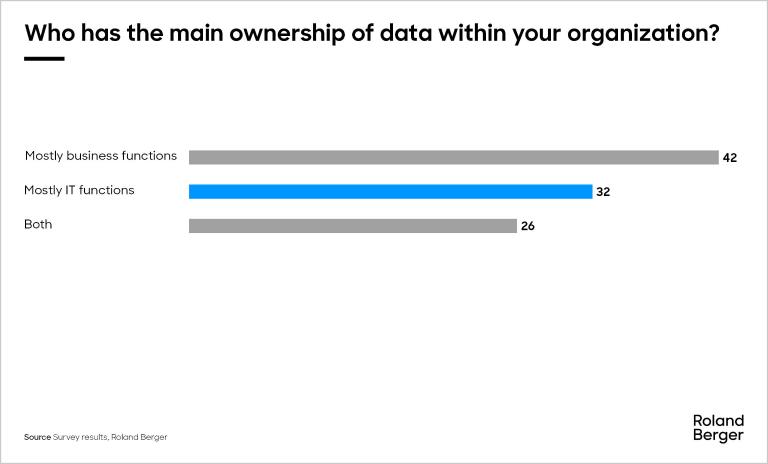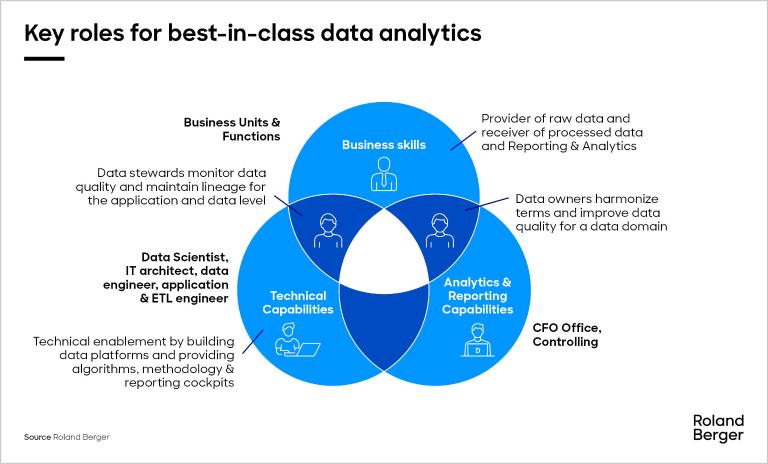Hyperloop is an environmentally clean mode of high-speed transportation. So why is it still struggling to make headway – and how can we give it new momentum?


Data driven transformation in GCC logistics
Embracing AI and analytics: How GCC logistics leaders are navigating the data maturity journey

As we embark on the era of the AI (Artificial Intelligence) revolution, underscored by advancements such as Chat GPT and a wide range of data-driven AI tools, where do logistics companies stand in terms of utilizing data to inform their decisions? Our survey and in-depth study of the GCC (Gulf Cooperation Council) logistics market highlight the trends that logistics companies adopt to become more competitive and uncover where every day struggles lie. The study also illustrates how some companies rapidly embrace change while others continue to lag, struggling to climb the data maturity ladder.

We have conducted surveys and interviews with 50 logistics executives and top management personnel from nine prominent logistics companies in the GCC (Gulf Cooperation Council) region. These discussions focused on their progress and achievements in data-driven decision-making. Below, you will find a summary of the findings.
Status quo – How do logistics leaders use data today?
Unsurprisingly, 92% of the survey participants regard data as a crucial resource for their companies. Approximately half of the respondents identify overall operations as the area that relies most on data, with fleet management, strategic planning, and forecasting following closely behind.
Only 18% of respondents regard carbon footprint tracking as data-intensive in their organization, and just 16% reveal that data collection relies on planned analyses. Meanwhile, 42% indicate relying primarily on available data, and another 42% on both approaches (refer to ref a.).

"The GCC logistics sector is at a pivotal moment: some companies are excelling in data maturity, while others lag behind. Embracing data-driven insights as a strategic cornerstone, not just a tool, is crucial for these organizations."
Rather than identifying data points that can help answer their most critical questions, companies still predominantly focus on the data that is readily available to collect for querying, ignoring the potential of existing data, that is, the data that lies beyond the typical collection scope. A scope with a tendency to constrict, as collection efforts tend to focus on building upon a specific and historically accumulated set of data points.
On the other hand, data analysis or usage also has significant room for enhancement. None of the participants consider their capabilities to be "best in class," with only 8% ranking them as "excellent," while a quarter view their capabilities as 'average.' This could be attributed, in part, to the fact that 32% of respondents see IT as the primary party responsible for data analytics (refer to ref b.), and 22% do not have or are unaware of their organization's use of a data framework.

One reason for these findings is that 24% of respondents reported not having a Chief Data Officer (CDO) or a similar role in their organization. Moreover, only 38% of participants perceive their company's systems as "not siloed" or only "partially siloed" (refer to ref c.), with nearly half identifying their systems as "siloed across business units," followed by "regions." Although regional silos are understandable due to GDPR (General Data Protection Regulation) restrictions (or equivalent), business unit silos are avoidable and are impediments that can be addressed with minimal effort, such as updating legacy data frameworks and associated processes.

When analyzing how logistics leaders in the GCC utilize data, significant disparities arise in the type of data gathered and examined. The survey found that only 38% of respondents use structured data while disregarding a wealth of available unstructured data that could be utilized to gauge customer sentiment and more.
Regrettably, only 20% of GCC's logistics industry respondents recognize a systematic link between data and business insights. Data analytics is often driven by IT functions and data is frequently siloed across business units. This highlights a tendency to prioritize available data over business requirements. It is crucial to prioritize business goals in data analyses to avoid accumulating analyzed data without a clear purpose, hindering the goal of gaining a competitive edge.
In an increasingly data-driven world, what do logistics executives see as the key developments for their companies and what are their plans for the future?
While 74% of respondents have plans ranging from the short (0-2 years) to mid-term (3-5 years) duration to increase their use of data to generate business insights, some key issues persist that may hinder their success. The main obstacle by a wide margin is the availability of skilled personnel (refer to ref d.), followed by legacy systems that must catch up with modern data collection and analysis approaches.

Executives seeking to become data-driven have four core pillars to focus on, although they must address various challenges.
- Enhancing strategic planning and demand forecasting
- Streamlining processes
- Optimizing capacity and resource planning
- Boosting customer satisfaction
While new advancements in AI present significant opportunities to achieve these objectives, relying solely on AI will not suffice to bridge the skilled resource gap, replace outdated systems, or seamlessly connect insights with business outcomes.
Logistics leaders need to follow a structured approach to help tackle their challenges:
To sustainably address crucial issues highlighted in this article, logistics leaders must follow a structured four-step value chain-driven approach:
- Start with business strategy needs:
Begin by identifying strategic goals. At this stage, ask what you want to achieve, not what data is available or required. Focus on business objectives, like reducing last-mile costs or boosting customer satisfaction, rather than on the data that is available or required data. Prioritize based on the company's future strategy and align with business units, functions, and markets. Generate and discuss overarching use case ideas and engage with relevant teams for feedback and refinement.
- Find and upskill the right people:
Logistics executives must address the shortage of skilled personnel by implementing a structured people plan, and investing in recruiting and training across three main clusters: Business skills, technical capabilities, and analytics and reporting capabilities.

Those capabilities, when working together, create a beneficial data loop, allowing businesses to process data from raw inputs to analytics effectively:
- Business Units generate and transfer raw data (for instance, from extensive customer satisfaction surveys or by referencing target social media sources)
- Data Stewards monitor and ensure the quality and integrity of data at both the application and data levels
- Data Owners collaborate with data teams to govern and improve the quality and usability of the data
- IT professionals and data experts refine data processing tools and methods, facilitating better analysis, adding value to the data
- Analysts apply specialized techniques to the refined data to extract insights and prepare comprehensive reports that best fit the business requirements and context
- The analytical reports, filled with actionable insights, are provided to the business units, completing the loop and enabling data-driven decision-making
This cycle ensures that data is collected and analyzed, curated, and governed, with insights effectively fed back into the business strategy and operations.
- Derive required business and data requirements:
Start by detailing requirements and establishing business cases for selected use cases, then research and define solution concepts. Next, define and evaluate data and analytics models, support data sourcing and preparation, and finally, create deployment-ready models.
- Create the right technology stack to ingest, integrate, and analyze the data:
Based on a clear technology plan and an analytics roadmap, source and deploy the appropriate technical solutions, those that can help tackle use cases with the best possible business cases. Once deployed, support IT for integration of models into business applications and assist with data provisioning and data ingestion into a central data and analytics platform.

By implementing this approach and strategies, logistics companies can leverage data effectively, generate valuable insights, and stay competitive as they ascend the data maturity steps in the era of the AI revolution.
If you wish to learn more, benchmark your company’s data capabilities, and assess possible solutions, reach out to us for access to and discuss the detailed survey results.






